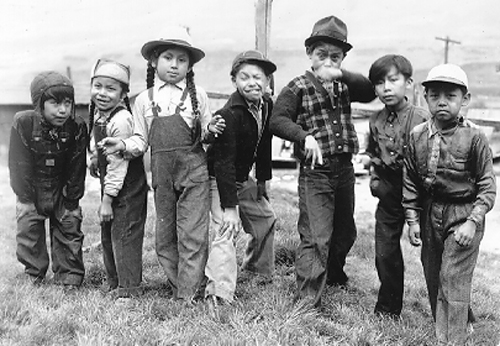History of Celilo Falls (suh-LIE-low)

Fishing at Celilo Falls, used by permission of Tom Robinson © 2000
Up until the Dalles Dam was completed, Celilo Falls was one of the most culturally significant natural wonders of the Americas. Seventy-five miles east of Portland, the untamed volume of the Columbia River dropped spectacularly through a complex maze of basaltic islands and narrow channels creating one of the world’s premiere fisheries. Archaeologists have determined that the mid-Columbia Indians, the River People, have lived and traded at this sacred site for at least 10,000 years. Using lines, spears, and long-poled dipnets while standing on rocks and precarious wood platforms, they fished the falls for the abundant runs of salmon struggling through the turbulent waters on their way upstream to spawning beds. The River People smoked salmon, steelhead, and eels and sold what they did not use to the canneries. In the spring of 1957, the U.S. Army Corp of Engineers closed the floodgates of the Dalles Dam. The full force of the Columbia River was turned upon itself - flooding the falls and the ancient fishing site. Celilo Village was relocated up to the edge of the rimrock walls of the gorge - separated from the river by the I-84 freeway and the railroad tracks. What was once Celilo Falls is now called Celilo Lake - the slack water created by the dam. The River People still fish on the river and struggle to manage the ghosts of the great runs. They still have their feasts and pray for the return of the salmon.
The Setting of the Story
Celilo Village, on the Oregon side of the Columbia River, sits directly across from Fallbridge (now Wishram) - a predominantly white railroad town on the north bank in Washington. These two towns, separated by cultural and natural chasms, were connected only by a high railroad bridge. The only way to get from one town to the other was to walk the tracks above the rocks and river far below. The reservation town of Warm Springs, where the Indian boarding school was located, is a southbound one-hour drive from Celilo today. However, during the early 20th century it was considered quite remote.
Boarding Schools and Assimilation

Tom Robinson © 2000
Until the mid-twentieth century, U.S. Indian policy was to assimilate Indians into mainstream society. Part of this policy was to separate Indian children from their families and place them in boarding schools to live until the age of 18. Often run by churches and the Bureau of Indian Affairs, these schools forbade students to speak their language or practice traditional religious customs, art, music, or dance. English and conversion to Christianity were required. Boarding school administrators had a difficult time getting parents to send their children to the “white man’s schools.” This resulted sometimes in threatening parents with jail, and, in some cases, absconding children and taking them to schools away from homes.
The Ghosts and the Story
The ghosts who occupy the scaffolds on “the other side” represent a created cosmology. Elements of Native American stories and oral histories have served as a source of inspiration for this place and the spirits that dwell there. Yet, the ghosts and their place are entirely the creation of the authors. It is our intent to honor all the people and the spirits for whom Celilo and the River are sacred places. We hope we have not offended anyone and seek their forgiveness and counsel should we do so. We present this story with the hope that we may all gain some appreciation for the forces that have shaped the people and this landscape we call Celilo.